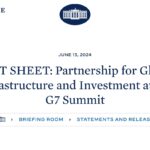Let us examine the facts and bypass the hype. While much of the XRP and crypto community remains fixated on short-term price movements, the broader significance of XRP is often overlooked. XRP’s purpose extends well beyond retail investors or short-lived price surges. Its potential impact lies in addressing the global liquidity crisis and transforming the financial system at an institutional level. While influencers focus on the headlines, XRP’s core utility is in its capacity to connect and stabilize financial systems that are increasingly under strain.
The Escalating Liquidity Crisis: A Growing Threat
Global liquidity is declining, and this trend transcends any political administration. Observers who closely analyze the financial system, particularly the U.S. bond market, are noting significant risks. The U.S. government’s unparalleled spending has propelled debt levels to unprecedented heights, a situation compounded by the Federal Reserve’s recent policies. Although interest rates have decreased, the long-term outlook suggests an even steeper reduction in liquidity, limiting the ability of institutions, banks, and governments to conduct borrowing and lending activities efficiently.
As liquidity dries up, financial transactions face delays or, in extreme cases, come to a halt. This issue is not a minor inconvenience but a systemic risk that could undermine the stability of the global economy. The U.S. bond market’s vulnerability has prompted numerous warnings, but the true implications of a potential collapse have not been fully acknowledged. The repercussions are far-reaching, as they directly impact governments’ ability to finance their operations and service debt, with consequences for the wider economy.
RLUSD and the TokeniSation of Debt
To address this impending crisis, Ripple has been quietly developing infrastructure that could play a stabilizing role in financial markets. Among these initiatives is RLUSD, a stablecoin designed to facilitate the tokenization of government and institutional debt. By utilizing blockchain technology, RLUSD offers a more efficient framework for debt management, reducing some of the systemic risks inherent in traditional debt markets.
However, while RLUSD provides a temporary mechanism to manage and tokenize debt, it does not solve the fundamental issues of excessive debt and the depreciation of currency values. These foundational problems persist, and a global financial system burdened by unsustainable debt and declining currency value is ultimately unsustainable. Here, XRP’s role becomes particularly relevant.
XRP as a Bridge Asset: Addressing Liquidity Challenges
For years, XRP’s primary value has been its ability to serve as a bridge asset, providing liquidity within a system increasingly deprived of it. Ripple’s partnerships with major institutions position XRP as a bridge currency that can facilitate cross-border transactions instantly. In a world where dollar liquidity is decreasing, the need for an efficient, scalable alternative is critical. XRP is purpose-built for this demand, acting as a bridge asset to support immediate settlements and inject liquidity where it is most required.
As conventional liquidity sources diminish, demand for XRP is likely to surge. Unlike fiat currencies that can be infinitely produced, XRP’s fixed supply and deflationary mechanism through token burning make it an attractive asset for liquidity provision. Consequently, XRP’s value reflects more than mere speculation; it directly correlates with the market’s need for liquidity, especially as traditional financial structures falter.
The Community’s Misguided Focus
Regrettably, much of the XRP community overlooks this broader context, often failing to communicate the complete picture. Instead, the community is entangled in cycles of hype, fear, and uncertainty fueled by influencers who rely on shallow insights and cryptic social media cues. This narrow focus on short-term price movements detracts from an understanding of XRP’s real utility. XRP is not merely about short-term gains or immediate price surges; it is poised to resolve crucial challenges in the global financial infrastructure by enabling liquidity in an increasingly constrained market.
The Larger Vision: XRP’s Role in the Emerging Financial Order
XRP’s future potential extends far beyond speculative trading. It is positioned to be a foundational asset within a global financial system that is being restructured. With mounting reports about vulnerabilities in the U.S. bond market and RLUSD’s emerging role in debt management, demand for a bridge asset like XRP is likely to increase. As a result, XRP’s value will need to rise to meet this demand, providing liquidity in a world where traditional financial resources are failing.
During crises, markets gravitate toward solutions that offer genuine utility and scalability. XRP was conceived with precisely these scenarios in mind, designed to be the connecting element in a new, interoperable financial network that can adapt to an environment where liquidity is increasingly scarce, and traditional systems are weighed down by inefficiencies.
Conclusion: A Call for a Deeper Understanding
For those willing to engage with these complex dynamics, it becomes evident that XRP is strategically positioned as a critical asset in the evolving financial landscape. Its capacity to address liquidity shortages places XRP at the forefront of solutions for an impending global liquidity crisis. As the structural weaknesses of traditional systems become more apparent, XRP’s true purpose and value are likely to emerge, driven not by speculation but by its fundamental role in an evolving global financial order.














